
As soon as he is safely over the cross-country finish line, the three-day event horse is met by grooms, support crew, and vets. Their aim is to manage and monitor his recovery, maximizing his chances of passing the vet inspection the following morning and performing at his best in the showjumping phase.
As the rider dismounts, the grooms untack and check the horse over. Cooling is especially important in hot, humid weather. Heat produced by the muscles during cross-country will raise the horse’s body temperature unless it is dissipated. Core temperature usually rises within five to 10 minutes of finishing.
Heat is lost via the blood vessels in the skin, so applying large volumes of cooled water over the entire horse is the most efficient cooling method. A horse’s temperature, which is usually between 37ËšC and 38ËšC, can reach more than 40ËšC at the end of cross-country. If it rises above 41ËšC, he may be at risk of overheating, or hyperthermia, signs of which include staggering, kicking out and a groggy, uncoordinated appearance.
The competition vets observe the horse finishing, checking him for injury and monitoring his temperature, heart rate and rhythm, and respiratory rate.
While galloping around the course, a horse’s heart rate may have reached 180–220 beats per minute (bpm). This falls to around 100–140bpm after the finish, and with normal recovery will decrease gradually to 80–90bpm. The time this takes depends upon the horse’s level of fitness. It may not drop further until he is in a quiet environment; heart rate returns to resting levels only when the horse is truly resting. Any arrhythmias (abnormalities in rhythm), are noted and monitored.
Esta historia es de la edición April 30, 2020 de Horse & Hound.
Comience su prueba gratuita de Magzter GOLD de 7 días para acceder a miles de historias premium seleccionadas y a más de 9,000 revistas y periódicos.
Ya eres suscriptor ? Conectar
Esta historia es de la edición April 30, 2020 de Horse & Hound.
Comience su prueba gratuita de Magzter GOLD de 7 días para acceder a miles de historias premium seleccionadas y a más de 9,000 revistas y periódicos.
Ya eres suscriptor? Conectar

'Sorry, but I wasn't feeling it'
Fresh from the opening meet, Tessa Waugh hasn't quite yet been bitten by the hunting bug. Without the crisp autumnal air and cheek-pinching cold she hoped for, it's a sluggish start
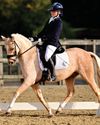
New pair pull off a win
A former European Championships pony is on form with his new rider, while elsewhere former showjumpers and eventers take ribbons

Lording it over the rest
Horses who have returned from injury, a second generation homebred and a long format specialist score on the final weekend of the British season
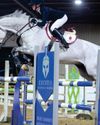
Smith hits flying form
A \"her way or no way\" mare helps Zoe Smith to an impressive ribbon haul and a rider beats his own boss to the top spot

Jankorado hits the jackpot
Paul Sims is triumphant despite his interrupted jump-off preparation and a borrowed horse comes up trumps
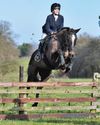
Peanut
From \"dangerous, scary\" to hedge-hopping brilliance, hunting has been the making of this unstable but very lovable equine character

She's a corker
Communication, says long-standing and highly respected Belvoir master Lady Sarah McCorquodale, is the key to all, as Catherine Austen discovers
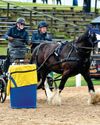
Access all areas Cavalier Centre
The Cavalier Centre is a fully accessible, state-of-the-art equestrian centre designed to improve lives through horse-based activities. Ellie May Forrester pays a visit
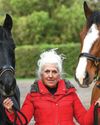
'Use it or lose it'
Not everyone wants to reach for the pipe and slippers at a certain age. Becky Murray speaks to some veteran horse-and-rider combos for their secrets of human and equine longevity
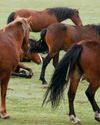
A new way forward
Worm control in horses is vital, but established methods will not remain effective for much longer. Tim Mair FRCVS explains why and how we need to change